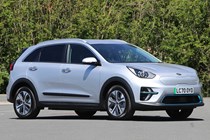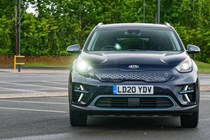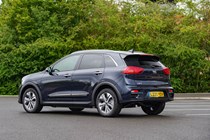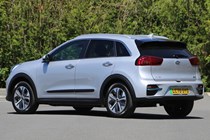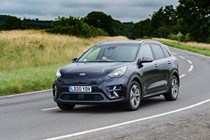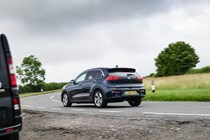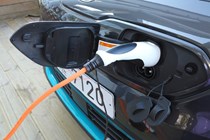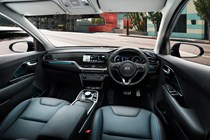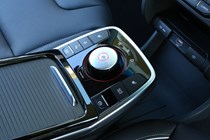Kia e-Niro SUV (2019-2022) engines, drive and performance
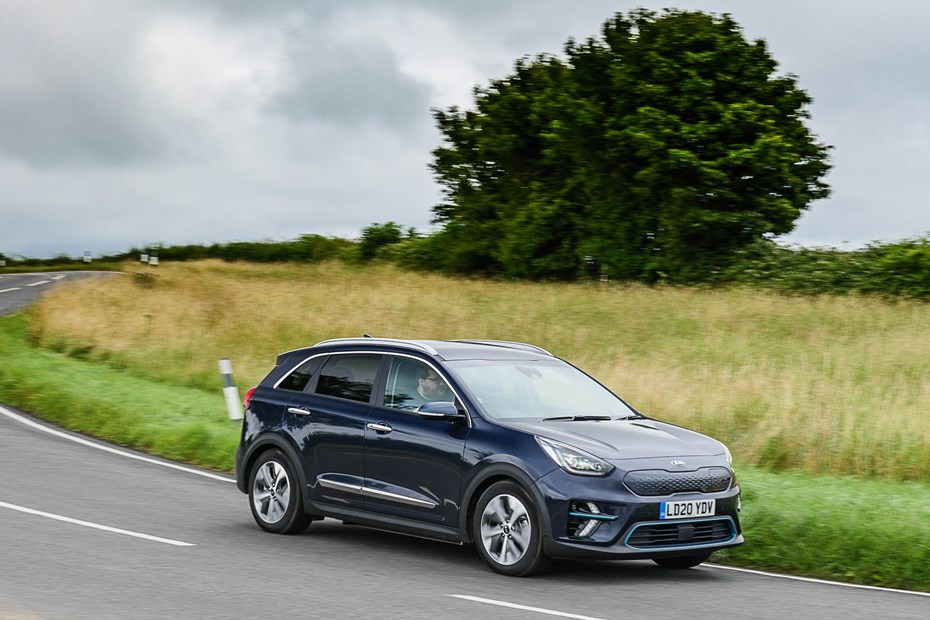
- Strong performance from electric motor
- Easy to drive
- Quiet and calm at all speeds
What power options are there?
The Kia e-Niro may be an eco-car at heart, but it provides an impressive turn of performance if needed. There are two levels of power to be had, to complement the two different battery sizes – but as you’ll read, the smaller e-Niro doesn’t feel out of its depth on A-roads and motorways.
All motor options
| Model | Power and torque |
0-62mph time |
Top speed |
| e-Niro 38kWh | 136hp, 395Nm | 9.5secs | 99mph |
| e-Niro 64kWh | 204hp, 395Nm | 7.5secs | 99mph |
At the heart of the long-range e-Niro beats a 204hp electric motor with 395Nm of torque while the entry-level standard range 38kWh model makes do with 136hp. As with all electric cars, power is delivered differently to a petrol or diesel engine – all of the motor’s power is available instantly, tailing off as speeds increase.
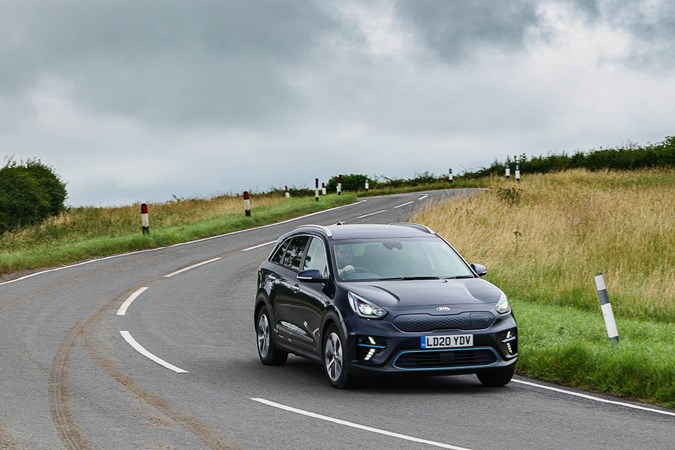
The entry-level model is more than capable enough to keep up with the flow up to motorway speeds, while the quicker Kia e-Niro accelerates much more smartly off the line. Around town, it feels even faster – it sprints to 30mph in moments, with definite potential to surprise other drivers off the lights.
Performance tails off somewhat at higher speeds, but there’s still plenty in reserve to drive on the motorway – you won’t feel lacking if you need to overtake, for example.
There are three driving modes to choose from – Eco, Comfort, and Sport. The former dulls the throttle response in a bid to extract more range, but we didn’t find ourselves using it very much.
Sport is more interesting, as it sharpens the throttle and unlocks all of the electric motor’s performance. It makes the car very peppy indeed, but the throttle’s hair-trigger response means it’s all too easy to spin the wheels when setting off. We found ourselves leaving the e-Niro in Comfort for the majority of the time.
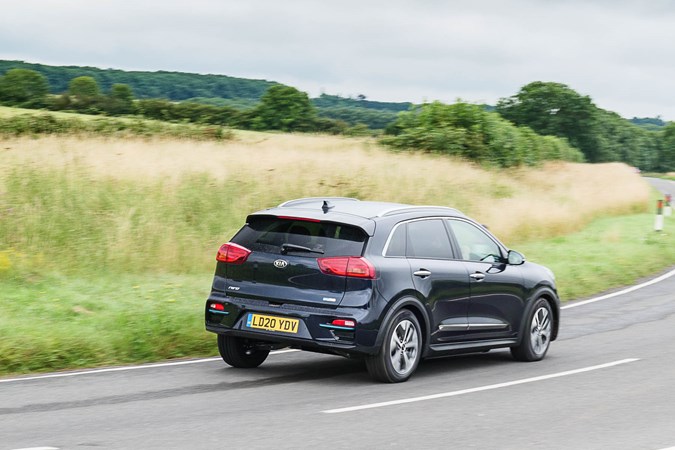
Regenerative braking, where the electric motor is placed into reverse and used to slow the car rather than power it, is present, and can be adjusted via steering wheel-mounted paddles. Pull the left paddle to increase the level of regen, or the right to decrease it. Three levels are available, and if you pull and hold the left paddle while you’re on setting 3 the e-Niro will pull itself to a complete stop via regen alone.
This system is useful, but it’s not as smooth to operate as the e-Pedal fitted to the Nissan Leaf. That system allows you to drive the car on one pedal alone, whereas the e-Niro demands a further input from the paddle.
Handling
- e-Niro is not a particularly fun car to drive
- Tyres struggle with power
- Firm ride doesn’t translate to good handling
Handling isn’t a particularly strong point of the Kia e-Niro. It’s safe, secure and neutral, but once the initial novelty of the powerful electric motor wears off it’s a struggle to describe it as fun.
The biggest issue is the e-Niro’s tyres, which are narrow for ultra-low rolling resistance, increasing driving range. That’s all well and good, but the powerful e-Niro puts all of its 204hp through the front wheels, resulting in rather a lot of wheelspin at even moderate throttle inputs.
Worse, if you don’t carefully modulate the throttle when leaving a corner it’s all too easy to trigger the traction control system – even if you’re not going very fast. It’s never dangerous, but it can be disconcerting.
The e-Niro’s ride is firm, but the car still leans a lot in bends and doesn’t have particularly tight body control. The steering is light and accurate, but doesn’t feel totally natural, either. Still, the Kia fills it’s brief by being safe, quiet and calming to drive – but for keen motorists, a more driver-focused EV such as a Peugeot e-208 or Honda e will be more enjoyable.



